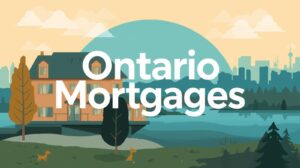In the world of mortgage financing, borrowers can choose between different types of mortgage lenders, including tier-A banks, B lenders, credit unions, and private lenders. And of course, mortgage interest rates are usually a large deciding factor. One type of lender that has gained tremendous popularity since 2020 is the “B lender,” also known as a non-prime lender.
Traditionally, B lenders would cater to borrowers who may not qualify for traditional mortgages due to factors such as lower credit scores or irregular income streams. While that still holds true in 2023, B lender mortgages have grown in popularity due to higher affordability, more flexible debt-to-income ratios, and longer amortization periods – making them more favorable to all types of borrowers and investors, despite higher interest rates!
That’s right, many people (including those with great credit and stable employment) have foregone lower interest rates, and instead, have chosen a B lender mortgage strictly for higher affordability – which we all know is of most importance in Ontario, especially the Greater Toronto Area.
Like many things in life, there is often a trade-off. Sure, rates and closing costs might be higher with a B lender, but it’s hard to achieve both the lowest mortgage rate AND highest mortgage affordability simultaneously (despite how contradictory that sounds). There is no exact rule of thumb for variances between A and B lender mortgage rates, but B lenders tend to offer rates about 0.90% – 1.00% higher than the major banks.
B lender mortgage rates can also vary widely depending on the borrower’s financial profile and the lender’s underwriting guidelines. Unlike tier-A banks, there is no ‘one program fits all’. In general, B lender rates tend to be higher than those offered by traditional lenders, but they are ALWAYS lower than private mortgage lenders, making them the best next alternative to traditional financing.
When considering the suitability of a B lender mortgage, it’s important to carefully evaluate the terms and conditions of the loan. Having said that, you’ll notice that terms and conditions differ very little from those of your tier-A banks. This is partly due to strict regulation in Canada which oversees all banks and financial lending institutions across the country. It’s worth mentioning that many B lenders also have ‘Bank’ status in Canada, adding to their worthiness.
While B lender mortgage rates may be more expensive than traditional mortgages, they can be a valuable tool for borrowers who don’t qualify for conventional financing. By working with a B lender, these borrowers can still access the home financing they need to achieve their purchase or refinance goals.
Wants to find out more about B lenders and whether this option is suitable given your goals? Call us today at (905) 455-5005.


